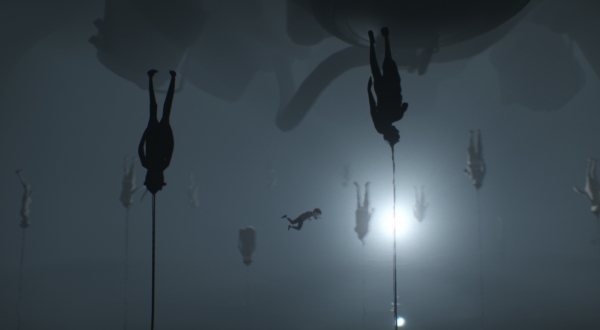Why One Game Composer Used A Real Human Skull To Make His Music

Playdead Studio's Inside is a haunting experience. It's not a traditional horror game but it has plenty of chilling and frightful moments. Well, a lot of those chilling moments were made possible thanks to music made with a human skull, and the composer recently explained why he decided to go that route.
Martin Stig Andersen was the composer Inside. He recently did an article on Gamasutra breaking down the engineering and sound design behind the game's musical compositions, revealing that it was all done synthetically... and through the use of a human skull. The idea was to get an idea of how the music would sound to the listener through the skull. He explains in the piece...
People are often shocked when they hear themselves recorded, because things sound totally different inside your head. Things sound much softer in there, more full, in a way. This is because a large part of what you hear is your voice resonating inside your body, in your jawbone for example...So I had the basic idea of trying to recreate sounds as they would sound if they were happening inside your head.
It's probably hard to grasp a concept of how someone could use a skull to make music, but Anderson had an image of the skull hooked up to a laptop with wires and audio processors reading data being fed through the skull. Andersen teased an image of the setup on his Twitter account.
The skull and the jawbone were separated because the idea was that the sound is being fed from the jaw to the skull and then processed through the laptop. The vibrations of the sound actually ended up rattling the jaw and it caused the teeth to fall out. Disturbing, I know.
The end result was that Andersen wanted to capture a synthetic vibe, similar to the B-movie horror films from the 1980s, but not something that could easily be classified in a genre -- he wanted to steer clear from having Inside's music labeled in the same category as soundtracks from properties like Hotline Miami, the Netflix show Stranger Things or the movie Drive.
I'm sure you're absolutely curious to know how this all worked out and what the end product sounds like, and Andersen actually included comparison clips in the Gamasutra piece so you could get an understanding of how Inside's soundtrack sounded normally and how it sounded being processed through the human skull.
At first, I thought this was all a lot of pretentious fluff -- reading it before hearing it. But after listening to the way the skull literally transforms the sound in the before and after examples -- making it softer and giving it a haunting, hollow vibe -- it's easier to understand what Andersen was going for. And I must say, I think it works.
CINEMABLEND NEWSLETTER
Your Daily Blend of Entertainment News
The soundtrack fit perfectly with the violent, minimalist nature of Playdead's Inside. It was disturbing, unsettling, intriguing and depressing. It's not an easy feat to capture all of those feelings while also trying to keep players motivated through the harrowing scenarios as a little boy who is way out of his depth.
It's both a weird and fascinating peek behind the curtain to see how the wizard makes the machine work, and I can't say I'm disappointed.
Inside is currently available right now for the PS4, Xbox One and PC, and well worth checking out if you want to play through a disturbingly dark tale of fringe science gone wrong. It's quite fitting in a way given that even the way the music was brought to life -- through a human skull -- fits within the eerie scope of the game's design.
Staff Writer at CinemaBlend.
The Last Of Us Season 2 Episode 3 Live Blog: I'm Talking The Aftermath Of Joel's Tragedy, Ellie's Recovery And More
I Think Tom Hardy's New Action Movie Havoc Is A Total Blast, But One Detail Is Keeping Me From Outright Loving It
Full House's Jodie Sweetin And Andrea Barber Address 'Weird Question' They're Often Asked About Co-Star John Stamos, And It Sounds Like Fans Think the Tanners Are The Brady Bunch











